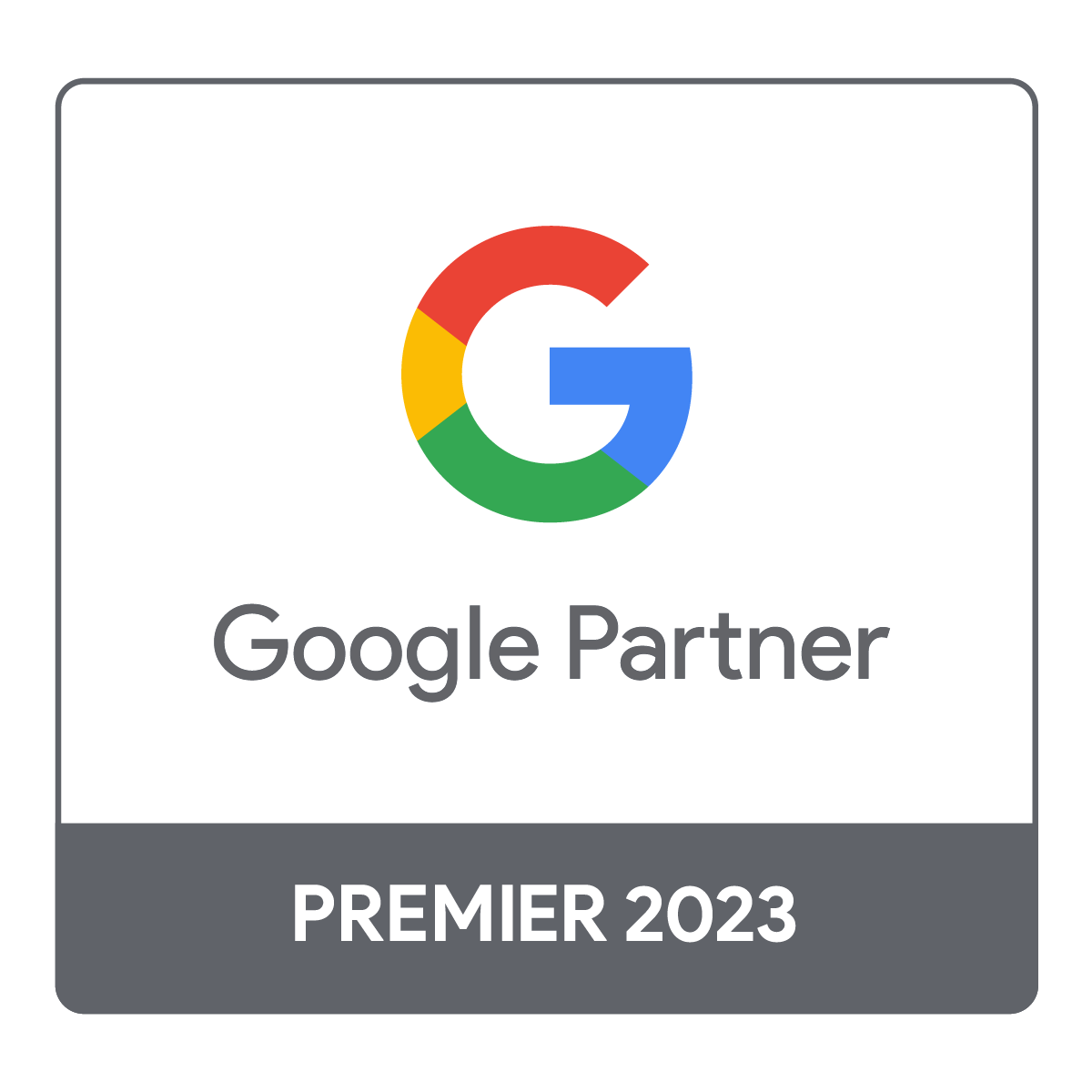Digital Marketing
Table of contents
What is Digital Marketing?
Digital marketing is a modern marketing approach that leverages digital channels such as search engines, social media, email, and websites to connect with current and prospective customers. It involves strategies like SEO, content marketing, email marketing, social media marketing, pay-per-click advertising, and more, all aimed at promoting businesses and engaging audiences in the online space.
Why is Digital Marketing Important?
All forms of marketing can contribute to your business’s success. Yet, ever since Covid 19, when all offline activities basically ceased to exist, digital marketing has gained significant prominence due to the widespread accessibility of digital platforms. As a matter of fact, as of April 2023, the global internet user base reached 5.18 billion.
Digital marketing offers a wide range of channels, from social media to text messaging, allowing for effective communication with your target demographic. Moreover, with relatively low initial costs, digital marketing stands out as a budget-friendly marketing strategy, especially for small businesses.
Offline Marketing vs Digital Marketing
Offline Marketing and Digital Marketing are two distinct strategic approaches to promoting a business, each with its own strengths and weaknesses. Here’s a comparison:
Offline Marketing:
Offline marketing refers to any promotional efforts carried out without the use of the internet. This includes traditional forms of marketing such as:
- Print: Newspapers, magazines, brochures, and flyers.
- Broadcast: Television and radio advertising.
- Direct Mail: Postcards, catalogs, and letters sent directly to consumers.
- Telemarketing: Phone calls to potential customers.
- Outdoor: Billboards, fliers, banners, and other forms of public advertising.
Strengths:
- Physical materials can often create a stronger impression and are hard to ignore.
- Easier to reach older demographics that may not be as internet-savvy.
- Can be highly local and targeted, such as a billboard in a specific location.
Weaknesses:
- It can be more expensive due to physical production costs.
- Difficult to measure success and ROI accurately.
- Less flexible and harder to adjust or stop once launched.
Digital Marketing:
Digital marketing is the promotion of products or brands via one or more forms of electronic media. This includes methods such as:
- SEO (Search Engine Optimization)
- Content Marketing (Blogs, eBooks, webinars)
- Social Media Marketing (Facebook, Twitter, LinkedIn)
- Email Marketing
- PPC (Pay Per Click) Advertising (Google Ads)
Strengths:
- Can reach a global audience.
- More cost-effective, with many free options available.
- Easy to measure success and adjust strategies in real-time.
- Highly targeted, allowing businesses to reach specific demographics.
Weaknesses:
- Can require technical knowledge and constant learning due to fast-changing trends.
- High competition as every business, regardless of size, has access to digital marketing.
- Digital ads are easier to ignore or block.
Below is a table of the summary of the comparison.
| Offline Marketing | Digital Marketing | |
|---|---|---|
| Methods | Print, Direct Mail, Telemarketing, Outdoor Billboards, fliers, banners, and other forms of public advertising. | SEO, Content Marketing, Social Media, Email Marketing, PPC, Google Ads |
| Strengths | Easier to reach older people, highly localized, physical materials have stronger impressions. | Can reach global audience, more cost effective, Calculable ROI. |
| Weaknesses | Expensive, hard to predict ROI, less flexibility | Require tech knowledge, high competition, digital ads are easier to ignore or block |
B2B versus B2C digital marketing
B2B Digital Marketing
B2B digital marketing are solutions who target other businesses.
- Audience: You’re speaking to professionals and decision-makers. They’re less interested in flashy sales pitches and more in the practical value and long-term ROI of your product or service. Clear, concise solutions to their problems are key.
- Sales Cycle: Be patient. The sales process can be lengthy, as purchases usually need sign-off from several parties. This means nurturing leads over time with a series of touchpoints, like follow-up emails, informative webinars, and detailed case studies.
- Content: Content is usually data-driven and informative. Whitepapers, industry reports, and thought leadership articles are common. The goal is to build trust and showcase expertise.
- Platforms: LinkedIn is often a major player for B2B marketing. It’s where professionals hang out, and its ad targeting options are excellent for reaching specific job titles, industries, or companies. Email marketing is also a powerful tool for sharing more in-depth content directly with interested parties.
B2C Digital Marketing
B2C digital marketing are solutions who target customers.
- Audience: You’re connecting with individuals who are using the product for personal use. Emotions and immediate benefits are often significant drivers behind purchasing decisions.
- Sales Cycle: The journey from discovery to purchase is generally quicker. Impulse buys are common, so making the product as appealing and easy to buy as possible is the goal.
- Content: Content is often more entertaining and aimed at creating an emotional connection. This might include engaging social media posts, contests, influencer collaborations, and lively videos.
- Platforms: Social media platforms like Instagram and Facebook are usually the stars of the show in B2C. They’re ideal for showcasing products, sharing engaging content, and connecting directly with consumers. Email marketing can also be effective for sharing discounts and promotions.
Below is a table of the summary of the comparison.
| B2B | B2C | |
|---|---|---|
| Audience | Professionals, business owners | Consumers, individuals |
| Sales Cycle | Lengthy | Quicker |
| Content | Data driven, informative | Emotional connections |
| Platforms | LinkedIn, EDMs | IG, Facebook |
Types of Digital Marketing
SEO
Search Engine Optimization (SEO) is the practice of optimizing a website to increase its visibility for relevant searches. The better visibility your web pages have in search results, the more likely you are to garner attention and attract prospective and existing customers to your business.
SEO involves making specific changes to your website design and content that make your site more attractive to a search engine. It’s done in hopes that the search engine will display your website as a top result on the search engine results page (SERP).
Key components of SEO include:
- Keyword Research
- Creating high-quality content
- Site Speed
- Mobile Responsiveness
- Link Building
Content Marketing
Content marketing is a strategic marketing approach focused on creating, distributing, and promoting valuable, relevant, and consistent content to attract and engage a clearly-defined audience. The ultimate goal is to drive profitable customer action.
Unlike traditional advertising strategies, content marketing aims to provide useful information to consumers, building a relationship over time. Types of content used in this method can include:
- Blog posts
- Videos
- Podcasts
- Social Media Posts
- Infographics
- Webinars
The success of content marketing relies on understanding what your audience values and delivering it in a way that enriches their knowledge, solves their problems, or entertains them, ultimately leading to brand trust and customer loyalty.
Social Media Marketing
Social media marketing is the use of social media platforms to connect with your audience to build your brand, increase sales, and drive website traffic. It involves publishing great content on your social media profiles, listening to and engaging with your followers, analyzing your results, and running social media advertisements.
The major social media platforms at present are:
Social media marketing can help businesses reach a larger audience than traditional marketing channels, create a direct line of communication with potential and existing customers, and enhance brand visibility and recognition.
Pay-Per-Click Marketing
Pay-Per-Click (PPC) marketing is a form of online advertising in which advertisers pay a fee each time one of their ads is clicked. Essentially, it’s a way of buying visits to your site, rather than attempting to “earn” those visits organically through SEO.
One of the most popular forms of PPC is search engine advertising, such as Google Ads. Advertisers bid for ad placement in a search engine’s sponsored links for keywords related to their business offerings.
When done right, the pay-per-click cost can be minor because the visit is worth more than what you pay for it. In other words, if you pay $3 for a click, but the click results in a $300 sale, then the PPC has been a worthwhile investment.
PPC marketing allows for quick entry, measurable results, and can complement other marketing and advertising strategies.
Affiliate Marketing
Affiliate marketing is a type of performance-based marketing strategy in which a business rewards one or more affiliates for each customer or visitor brought by the affiliate’s marketing efforts.
In this model, an affiliate (such as a blogger or a social media influencer) promotes a product or service offered by a business (the merchant). The affiliate includes a unique link to the merchant’s product in their content (such as a blog post or social media update). When a consumer clicks that link and makes a purchase (or completes a desired action), the affiliate earns a commission.
This marketing method benefits both parties: the business gets increased traffic and potential sales, while the affiliate gets a commission for their promotional efforts. It’s a cost-effective marketing strategy for businesses, as they only pay for results.
Influence Marketing
Influencer marketing is a type of marketing that focuses on using key leaders (influencers) to drive your brand’s message to the larger market. Instead of marketing directly to a large group of consumers, you instead inspire, hire, or pay influencers to get out the word for you.
Influencers can be anywhere and anyone. They’re trusted figures within a niche community and have a loyal, engaged audience. They can be celebrities, industry experts, bloggers, or even micro-influencers (those with a smaller but highly engaged following).
The power of influencer marketing comes from the trust and relationship that influencers have built with their followers. Their recommendations serve as a form of social proof to potential consumers. This marketing strategy is often used in tandem with social media and content marketing.
In 2023, the mainland app of Xiaohongshu is an epitome of influence marketing.
Email Marketing
Email marketing is a digital marketing strategy based on sending emails and developing relationships with prospects and customers. It’s a direct form of marketing, capable of making a high return, and is effectively used to promote products, services, or events.
An effective email marketing strategy convert prospects into customers, and turn first time buyers into recurring customers. It may involve sending out promotional emails, newsletters, transactional emails (such as order confirmations), and more.
Key components of email marketing include crafting compelling subject lines, designing aesthetically pleasing email templates, personalizing content, segmenting email lists for better targeting, and analyzing metrics like open rate and click-through rate to optimize campaigns.
One of the biggest benefits of email marketing is that it allows businesses to stay connected with their audience on a regular basis, building a relationship over time.
Digital Marketing Benefits
As a seasoned digital marketing agency, we’ve directly experienced the transformative power of digital marketing. Here are some key benefits that digital marketing can offer businesses:
- Global Reach: Digital marketing allows businesses to reach potential customers across the world with ease, removing traditional geographical limitations.
- Cost Efficiency: Compared to traditional marketing, digital marketing is significantly less costly, enabling even small businesses to run effective marketing campaigns.
- Measurable Results: With digital marketing, businesses can track their campaign performance in real-time using tools like Google Analytics, making it easy to adjust strategies as needed.
- Targeted Marketing: Digital platforms allow for precise targeting, ensuring your messages reach the right audience at the right time, improving the efficiency and effectiveness of marketing efforts.
- Engagement and Interaction: Digital marketing allows for two-way communication with customers in real-time, fostering better relationships and customer loyalty.
- Greater Conversion Rates: With targeted marketing and interaction, digital marketing tactics like SEO, email marketing, and social media marketing have the potential to significantly improve conversion rates.
- Level Playing Field: Digital marketing offers small and medium businesses the chance to compete alongside large corporations, something that’s much harder with traditional marketing methods.
- Brand Development: Consistent, high-quality content delivered through digital channels can help businesses build their brand and establish a strong online presence.
- Mobile Access: Digital marketing allows you to reach customers on their smartphones, a crucial platform given the increasing prevalence of mobile internet usage.
- Data Collection: Digital marketing enables businesses to collect valuable data about their audience’s behaviors and preferences, informing future business decisions and marketing strategies.
Harnessing these benefits can lead to significant business growth, and as a digital marketing agency, we can attest to the transformative potential of effective digital marketing.
How To Create a Digital Marketing Strategy?
As a seasoned digital marketing agency, we’ve honed our process for crafting effective digital marketing strategies. Here’s a step-by-step guide based on our experiences:
- Define Your Goals: First, establish what you want to achieve with your digital marketing strategy. Goals could range from increasing website traffic, improving brand awareness, generating leads, or boosting sales. Ensure that these goals are specific, measurable, achievable, relevant, and time-bound (SMART).
- Identify Your Target Audience: Understand who your customers are. Define their demographics, behaviors, interests, and pain points. This step is crucial for tailoring your marketing messages effectively.
- Analyze Your Current Digital Presence: If you’re already using digital marketing, assess what’s working and what’s not. Look at your website, content, SEO, social media, and email marketing. Use tools like Google Analytics to measure performance.
- Study Your Competitors: Understanding what your competitors are doing can help you identify opportunities and gaps in your own strategy. Use tools like SEMRush or BuzzSumo for competitive analysis.
- Choose the Right Channels: Based on your goals and audience, decide which digital marketing channels to use. This could include SEO, content marketing, social media, email marketing, PPC, affiliate marketing, etc.
- Develop a Content Strategy: Content is the backbone of digital marketing. Plan what types of content you’ll create (blogs, videos, webinars, infographics, etc.), the topics you’ll cover, and how often you’ll publish.
- Optimize for SEO: Implement SEO strategies to improve your visibility on search engines. This involves keyword research, on-page and off-page optimization, and technical SEO.
- Plan Your Social Media Strategy: Decide which platforms to use, what content to post, and how to engage with your audience. Remember, it’s not just about promoting your products but about building relationships too.
- Set Up Email Marketing: Build an email list and plan regular newsletters or promotional emails. Keep a balance between sales-focused and value-adding content.
- Track and Measure Results: Set up tracking systems to measure your results against your goals. Use these insights to tweak and improve your strategy over time.
Remember, a digital marketing strategy is not a set-it-and-forget-it thing. It requires regular monitoring and adjustments to ensure you’re meeting your goals. As a digital marketing agency, we can confidently say that the time and effort put into crafting a robust strategy is absolutely worth it.










